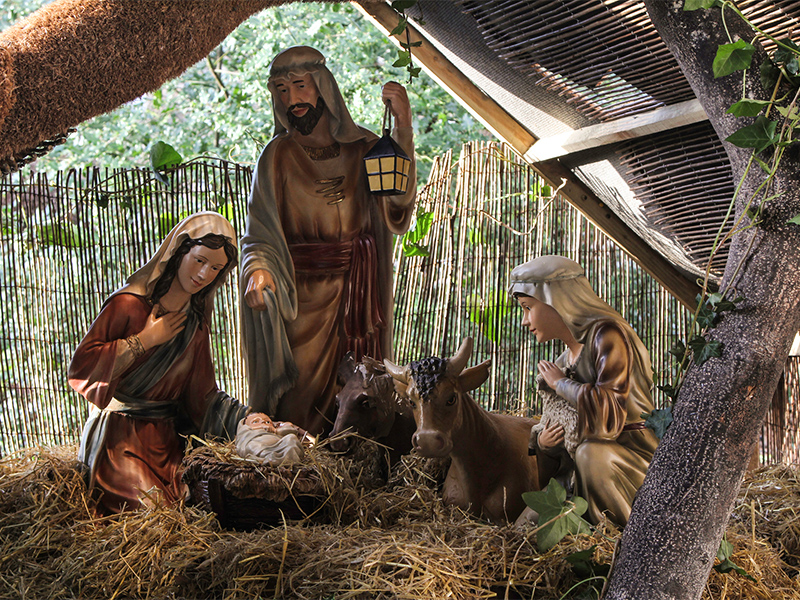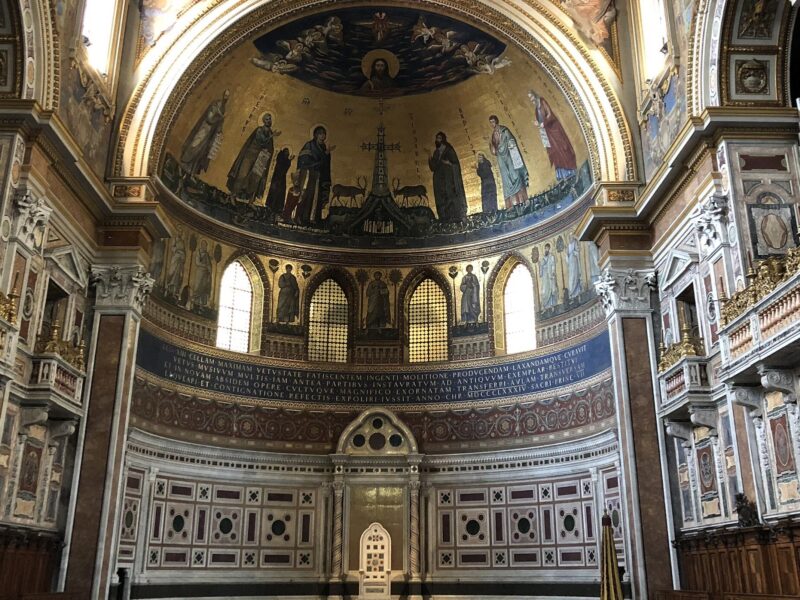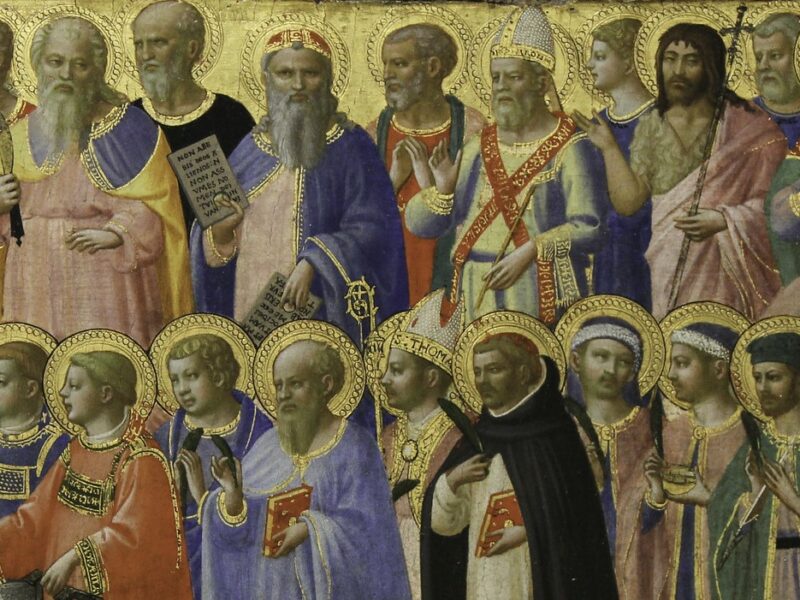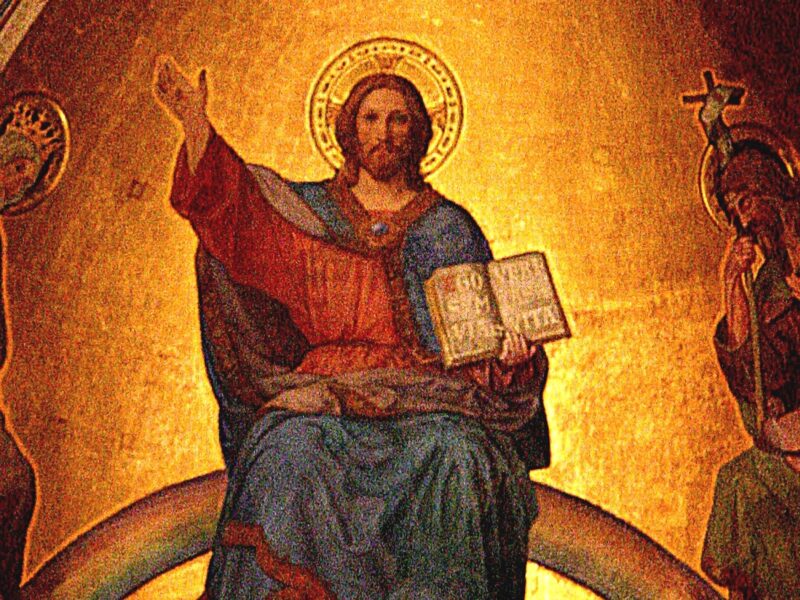
He Lies ‘Mid the Beasts of the Stall
Christmas Dawn Mass | Fr Bruno Clifton expounds on the significance of the ox and the ass in our Nativity scenes, explaining what their presence says about the Christ Child 
When I was in Cologne in June, I popped into the church of Duns Scotus where a kind guide took the opportunity to expound on the medieval altarpiece. He remarked that, in an age of low literacy, the faithful relied upon art to learn their biblical stories. It occurred to me that this rather left us at the mercy of the artists’ imagination. And imaginative representations of the Nativity certainly abound. Whether it is contemporary church patrons dropping in to adore the Christ child, or Mary and Joseph in 16th century dress, or the Magi crowding round the manger with the shepherds, depictions in art add layers in the story’s telling.
One of these elaborations, perhaps surprisingly, is the pastoral scene’s ox and ass. Their presence is not mentioned in the Gospels. This may surprise you because such rustic fauna is near ubiquitous in nativity scenes. And not only in fine art. Beloved Christmas carols make room for our four-legged friends in reflecting on the Christmas story: ‘he lies ’mid the beasts of the stall…’
It is Isaiah’s prophecy that places them at the scene.
‘An ox knows its owner, and a donkey its master’s crib.’ (Isa 1:3)
This last word (in the Greek Old Testament) is the same word used by Luke—feeding place, manger, stable—for the place where Mary lays down her firstborn (Lk 2:7). Here is the scriptural source of our livestock at Jesus’s nativity and there is a wonderful expression here of the whole creation’s submission to its Lord as the farmyard ‘bends its knee at the name of Jesus’ (Phil 2:10). Nevertheless, turn to the second chapter of Luke and you’ll see no mention of these devout bovines.
Although not in the Nativity, the ox and the donkey, however, often appear as a pair in the Old Testament and I think there is something here that can help us understand a bit about what is happening in Bethlehem.
Livestock, metonymically represented in the Old Testament by the pair ox and donkey, is a sign of prosperity: the Hebrew word for ‘owner’ in Isaiah 1:3 is drawn from the verb ‘to buy’. Recall that the tenth commandment forbids the coveting of such property (Ex 20:17; Deut 5:21). The ownership of ox and ass indicates wealth and power (Gen 32:5), a point emphasized by threats of their loss (Ex 22; Josh 6:21). This is most striking as one of the curses from Deuteronomy 28.
‘Your ox shall be butchered before your eyes, but you shall not eat of it. Your donkey shall be stolen in front of you, and shall not be restored to you…’ (Deut 28:31)
This is understandable in the pastoral setting of first millennium BC Palestine where ox and donkey are essential for subsistence. More than property and prosperity then, ox and donkey mean existence and for many of the poorest they mean the difference between living and dying, a fragility that leaves them vulnerable to exploitation.
‘The wicked remove landmarks; they seize flocks and pasture them. They drive away the donkey of the orphan; they take the widow’s ox for a pledge…’ (Job 24:2-3)
So, it is a deeper significance of power and poverty, of having and not having, that feeds into the rural nativity of our Lord and Saviour.
‘I will not accept a bull from your house, or goats from your folds. For every wild animal of the forest is mine, the cattle on a thousand hills.’ (Ps 50:9-10)
Among these symbols of survival, of ownership and fragility, lies the one who owns it all. And now he has nothing, one of the vulnerable and totally dependent on others for survival.
‘He emptied himself …’ (Phil 2:7)
This is the contrast that the Incarnation throws into focus, the contrast that is the reason for God’s coming at all and the joyful wonder that God has worked for us. He who in his merciful love came to the aid of all begins his loving redemption at the mercy of all, as a new born babe.
He lies ’mid the beasts of the stall,
Who is maker and Lord of us all…
He leaves all His glory behind,
To be born and to die for mankind;
With grateful beasts His cradle chooses,
Thankless man His love refuses;
Lord, have pity and mercy on me!
– Come to the Manger by James M. McLaughlin 1915.
Readings: Isa 62:11-12 | Titus 3:4-7 | Luke 2:15-20
Photograph of the Nativity scene at St Albert’s Priory, Edinburgh.


